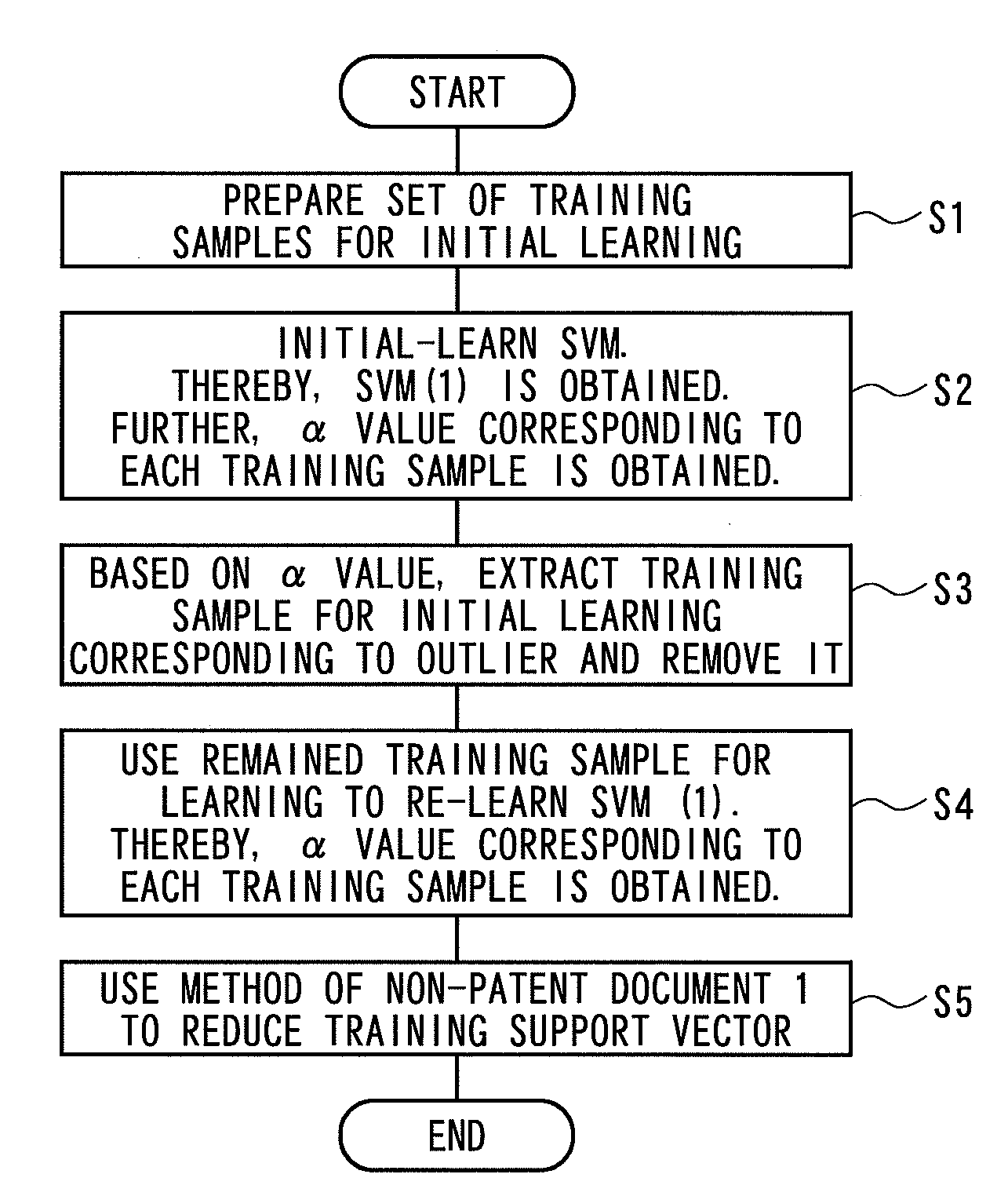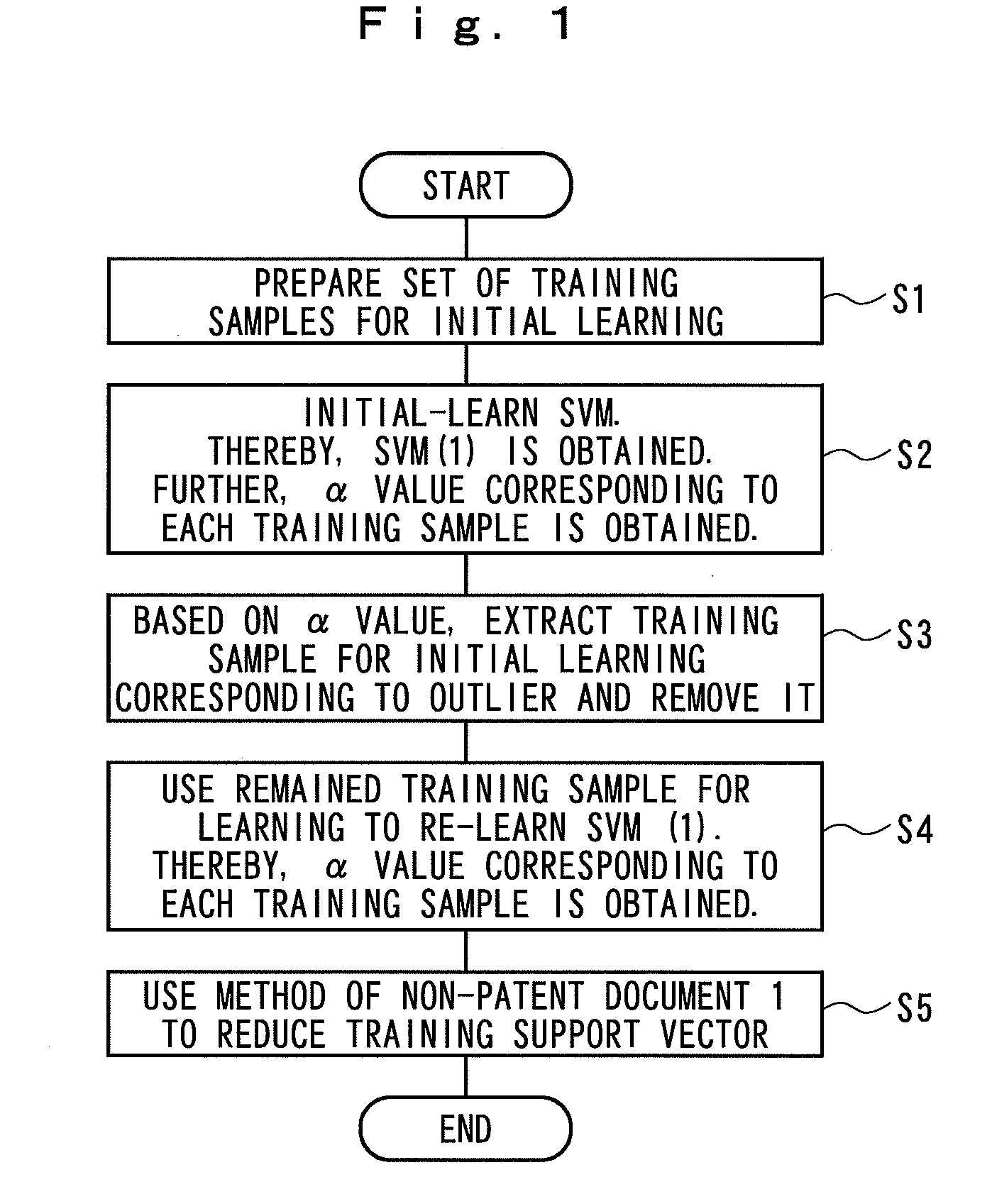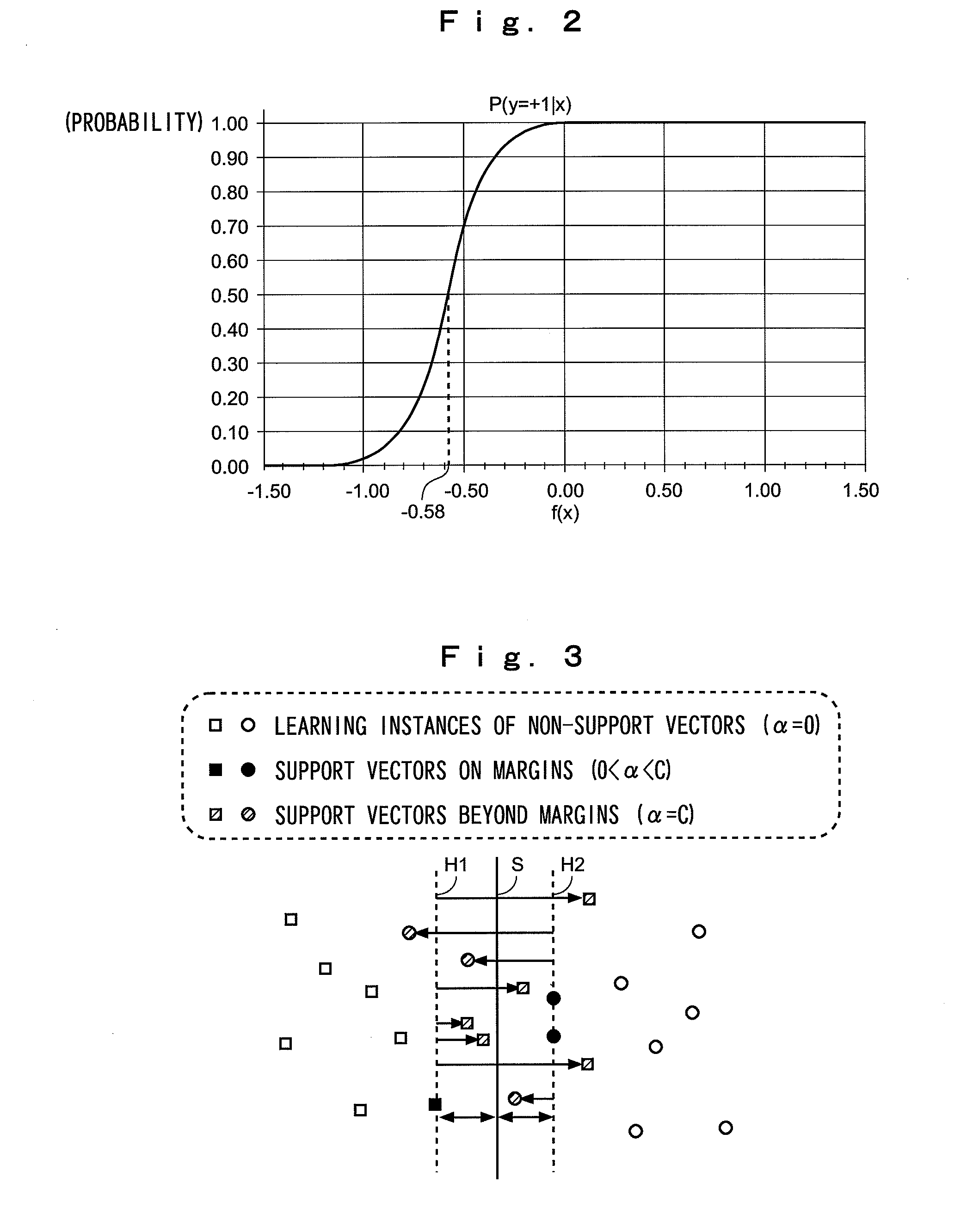Reducing method for support vector
a technology of support vectors and reducing methods, which is applied in the field of reducing methods for support vectors, can solve the problems of inability to achieve optimal simplification, and achieve the effects of improving classification accuracy, and reducing the number of support vectors
- Summary
- Abstract
- Description
- Claims
- Application Information
AI Technical Summary
Benefits of technology
Problems solved by technology
Method used
Image
Examples
Embodiment Construction
[0018]An overview of the present invention will be described below. First, initial learning (pilot leaning) is performed by using training data (a set of training samples) so as to produce a set of support vectors once. Subsequently, a process for removing a training sample corresponding to that in which an internal parameter (α value) corresponding to a support vector is equal to or more than a threshold value, i.e., a removal process for an outlier, is performed. Subsequently, the remaining training sample data is used for re-learning so as to produce a support vector set. Next, the support vectors are finally reduced by using the technique described in Non-Patent Document 1.
[0019]Subsequently, one embodiment of the present invention will be described with reference to a flowchart in FIG. 1.
[0020]First, at step S1, a set of training samples i (i=1, 2, m) for initial learning is prepared. For the set of training samples for initial learning, data {x1, x2, x3, . . . , xm} having kno...
PUM
 Login to View More
Login to View More Abstract
Description
Claims
Application Information
 Login to View More
Login to View More - R&D
- Intellectual Property
- Life Sciences
- Materials
- Tech Scout
- Unparalleled Data Quality
- Higher Quality Content
- 60% Fewer Hallucinations
Browse by: Latest US Patents, China's latest patents, Technical Efficacy Thesaurus, Application Domain, Technology Topic, Popular Technical Reports.
© 2025 PatSnap. All rights reserved.Legal|Privacy policy|Modern Slavery Act Transparency Statement|Sitemap|About US| Contact US: help@patsnap.com



